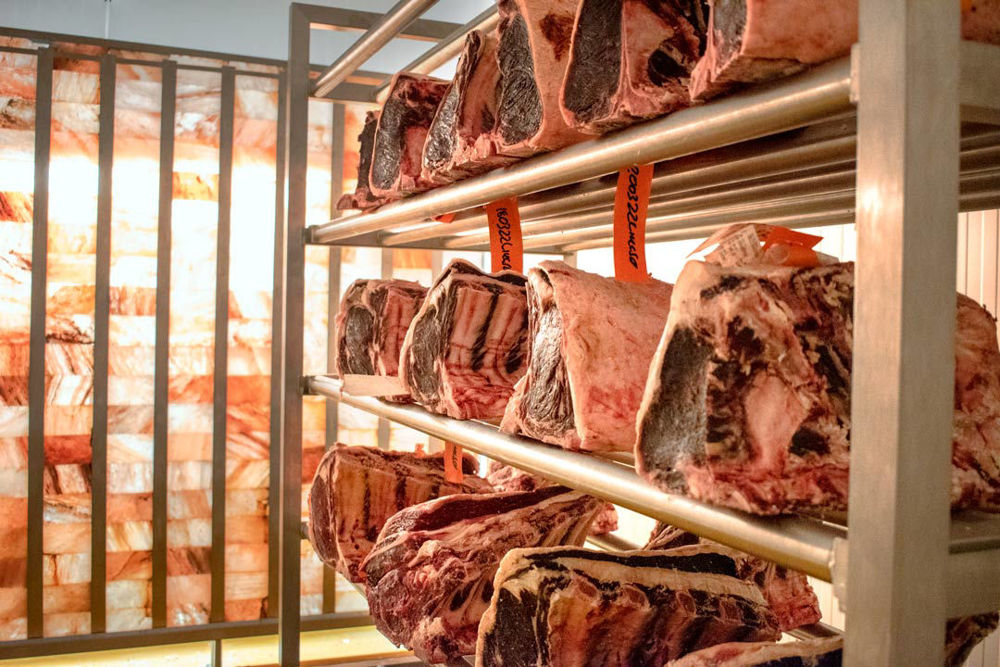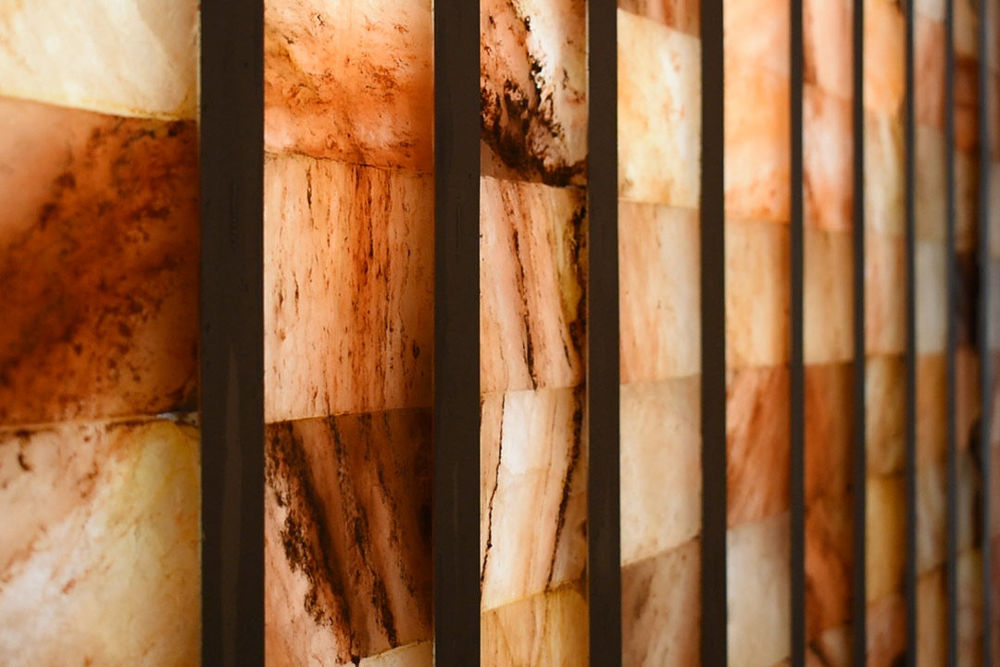Dry aged steaks will be available to Pilgrim Foodservice Customers in May 2022
I sat down with our Butchery Meat Specialist Chris Jelley to find out exactly what dry ageing is, and why the finished product is so unique.

What is dry aging?
Dry ageing is the slowing down of the aging process using a salt chamber. The Himalayan salt wall helps kill the bacteria, slowing down any bacterial growth on the meat. This enables the meat to be left maturing for a longer time than usual, allowing for a distinct flavour to develop. It also breaks down the proteins of the meat, making it more tender and juicy.
The salt draws out the bacteria from the atmosphere so that the meat ages in a different way to wet aging and normal hanging of beef. Salt particles from the Himalayan salt bricks (above), will enter the meat over the maturation period. The salt molecules that enter the meat will relax the muscle fibres of the joint resulting in a more tender steak. The salt molecules in the air also act as a natural antibacterial, thus preventing the growth of unwanted microbes.
The longer it's aged for, the more it's going to mature and the more flavoursome it becomes. The taste of the finished product is completely different to a normal piece of meat.

Himalayan salt vs standard dry ageing
Dry ageing alone is not as unique as our dry ageing process because of our Himalayan salt wall. Many places offer dry ageing which is done in an ageing room with humidity, temperature and air flow control. This is a traditional way of dry ageing meat but does not include the Himalayan salt wall. Our dry ageing room includes the Himalayan salt wall which introduces salt molecules to the air in the room. The salt has additional antibacterial properties which will prevent unwanted growth of bad bacteria. The salt particles will also help tenderise the meat.
Why Himalayan salt?
Himalayan salt comes in solid form which allows us to import large bricks of it, making up our salt wall. Himalayan salt also has numerous health benefits in of itself such as: - Improve respiratory diseases. - Balance your body's pH. - Reduce signs of aging. - Improve sleep quality. - Regulate blood sugar.

Why is meat kept on the bone during the aging process?
Dry ageing is best done on the bone because of how the meat deteriorates. If the bone is still on the meat, the middle part cannot deteriorate until it's been boned out and staked. The bone acts as further protection against the aging process for the meat between the bone and the exterior (fat) of the animal. The meat is not exposed to the air and it can mature behind the bone without having to trim anything when it's ready for staking. The fat retains the moisture from the atmosphere so that the meat can mature, remaining tender and juicy on the inside.
Normal hanging vs dry ageing
If you were hanging something for four or five, six weeks it would start to grow mould spores. Because the dry-ageing process is done in such a controlled environment, it doesn't grow the mould. It slows down the aging process unlike normal hanging of meat.
Wet aging vs dry ageing
Wet aging is done in a vacuum packed bag. It's purely to say that it's been aged so that somebody can put it on the menu. Whether it makes a big difference to the meat in comparison to dry aging, is highly debatable. 'I don't think it does at all' says our meat specialist Chris Jelley. The dry aged meat is not in a natural state, but it's open to the elements (unlike with wet aging) and it's being aged with a process that's been proven to work.

Does dry aging require more skill from a butcher?
Without a doubt, a dry aged boning piece of meat is a lot more difficult to bone out than a normal aged piece of meat. The outside of it is very hard and it takes much longer to do. The skill of our experienced butchers will bone out the dry aged meat and using their expertise, they will get a good yield. This is one of the things which what makes us more competitive than other suppliers.
How does it taste?
The taste of the finished product is completely different to a normal hung piece of meat or a wet aged piece of meat. Some people describe it as nutty and others as cheesy. This may not sound too flattering but just wait until you try it! It is lovely and tender. The Ranch in Louth have it week in, week out and said they've never had a complaint. They love it!
Sourcing
We look for a typical type of beast. It's got to have the right percentage of fat on the outside, It's got to be of a particular size so that we can cut thick steaks for the restaurant trade, and It's got to be of a certain grade. All beef is graded at slaughter and It's done on how much fat is on the back of the beast and how big it is and a few other factors. For an animal to be used for dry-ageing, you want a good covering of fat and for it to be a specific size. We only use O+ and R grade heifers.
For more on dry ageing click here







